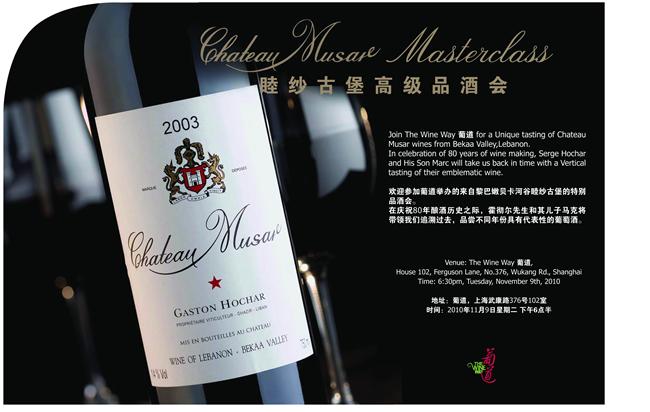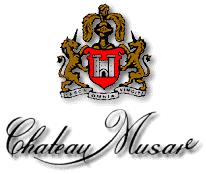
Chateau Musar was founded in 1930 by Gaston Hochar, although since 1959 it has been run by his two sons Serge and Ronald. Serge Hochar is the more prominent of the two, as although he is responsible for making the wine, he also finds time to travel the world to tastings and similar events. Ronald, a lawyer by profession, looks after the more mundane side of the business - distribution, marketing, book-keeping and so on.
Chateau Musar is located in an 18th Century castle in Ghazir, just fifteen miles north of Beirut, in Lebanon. This location, in a region that for many years was ravaged by civil war, placed demands on the Hochar family that most winemakers, fortunately, do not experience. The vineyards, which lie 30 miles east of Ghazir in the Bekaa Valley, were remarkably close to the frontline. Battle raged around the vines throughout the 1983 harvest, and Serge Hochar had to be smuggled in by small boat to make the wine. Similar conditions were endured in 1988 and 1989, and during the latter year both the Hochar family home and the Chateau Musar winery suffered direct hits from shelling. For a short while the wine cellars served a dual purpose, as they made excellent bomb shelters for the local people.
Alongside these troubles, Serge Hochar faces problems with which other vignerons may be more familiar. A distance of 30 miles between vineyards and winery mean that the freshly harvested grapes must endure a slow overland journey before hey are vinified. Maybe this contributes in some way to the style of Musar, particularly the oxidised white. The red Musar is more characterised by volatile acidity, which gives acetone-like aromas on the nose, which may resemble nail-polish remover or even polystyrene cement. Some regard this as a fault, whereas I am in the camp that regards this as typically Musar, and not a point of criticism.
The grand vin here is the red Chateau Musar, a blend which may include Cabernet Sauvignon, Cinsaut, Carignan, Grenache and Mourvedre. The wine is fermented in concrete, before spending one year in vat, then a year in French oak, before going back to vat for several years. Hochar believes his wine needs years - perhaps ten - before it is ready for drinking, and the wines are already some way towards that age when they are finally released onto the market. The white Chateau Musar is made from native varieties which include Merwah and Obaideh. It has an oxidised style that is too much for some.The wines first appeared on the UK market in 1979, when they were available for tasting at the Bristol Wine Fair. Too many tasters characterise them as Bordeaux-like, Rhône-like or Burgundy-like. It is clear that Musar is none of these things - it is unique. I accept that this wine can polarise opinion; some think it of high quality or at least good value, whereas others regard it is poor quality, faulty winemaking. I agree with the former with the red, but tend to fall in with the opposite camp where the white is concerned, but it is all down to personal taste. In addition there are a number of lesser cuvées which have been added to the range available on the UK market, some as recently as 2005. For a taste of Musar style, with less outlay and for earlier drinking, the wine to try is Hochar Pere et Fils, which is available as red, white and a rosé too. And there are a selection of second wines, the Cuvée Musar range, also red, white and rosé.





